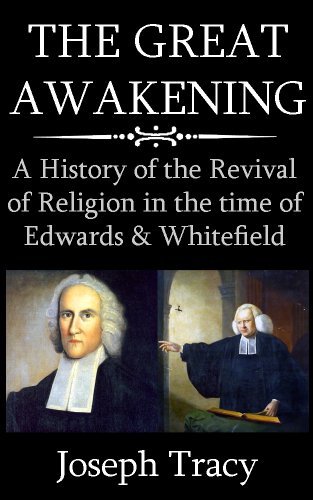A Book Review from Books At a Glance
By Gary Steward
Banner of Truth has brought out a new, beautiful edition of this classic work on the Great Awakening in a newly-typeset hardcover. The book contains no new indexes, introductions, or explanatory material but is completely Tracy’s text presented in a very attractive format. While indexes, modern introductions, and annotations may have been desirable additions, the effect in leaving them out has been to produce a volume that has an heirloom-quality distinction about it. The content of the book, then, is completely a product of the nineteenth century, including the beautiful engraving of New York on the dustjacket and inside cover. This new edition is truly a beautiful book and deserves to be gifted widely.
Tracy’s work is considered by many to be the first history of the spiritual awakenings the transformed the British colonies in America in the 1730s and 1740s. In fact, this book is credited with giving this period of revival its distinct name, “the Great Awakening.” Joseph Tracy originally published this work in 1841 after pulling together information from a trove of source material scattered in a variety of different places. Tracy, a Congregationalist minister in Vermont, opens this book by discussing the source material he used in reconstructing his history of the awakening. While his use of footnotes is rare, his discussion of sources gives an adequate idea of the material he relied upon, including The Christian History periodical published weekly in 1743 and 1744 and George Whitefield’s Journals. Tracy’s text contains many extended quotations from sources such as these and many others.
While Tracy chronicles the revivals of religion that swept across both sides of the Atlantic, his focus is on America and New England in particular. One chapter discusses Whitefield in England and a few sections discuss the revival in Virginia and the Carolinas, but the majority of the book focuses on New England and George Whitefield. Recent scholarship has explored more of the transatlantic character of the revival, but Tracy focuses on the events as they unfolded in America and impacted its development.
Tracy argues in this work that the Great Awakening period was characterized by one “great idea…extensively at work, breaking up the established and venerated habits of thought, feeling, and action, and producing a revolution in the minds of men, and thus in the very structure of society” (xiii). This great idea was “the idea of the ‘new birth’…that in order to be saved, a man must undergo a change in his principles of moral action, which will be either accompanied or succeeded by exercises of which he is conscious, and can give an account; so that those who have been thus changed may ordinarily be distinguished from those who have not; from which it follows, that all who exhibit no evidence of such a change, out to be considered and treated as unregenerate, and in the road to perdition and therefore not admitted to the communion of the churches” (xiii-xiv). According to Tracy, “The history of the ‘Great Awakening’ is the history of this idea” (xvii). This idea is the “key” for unlocking a right understanding of the Awakening, and it explains both the actions of its promoters and the reasoning of its critics.
Tracy is sympathetic with the leaders of the Great Awakening and their heralding of the need for a new birth. References to providence are rare, though Tracy is in agreement with those who have interpreted the awakening as caused by an unusual outpouring of the Holy Spirit. From this perspective he tells the story of Whitefield’s life and labors, the excesses of the revival, the fanaticism and recantations of James Davenport, the opposition of Charles Chauncy, and the resulting schisms within Congregational, Presbyterian, and Baptist life. Tracy concludes with a fascinating discussion of the results and impact of the awakening. The overall storyline is inspiring and at time spiritually challenging, with lots of detailed historical information.
Overall, this is a fascinating book. While more modern tellings of the Great Awakening might excel Tracy’s account in terms of critical reflection, this book is sure to remain a valuable and cherished classic for generations to come.
Dr. Gary Steward
Assistant Professor of History and Chair of the Department of Social Sciences
Colorado Christian University
